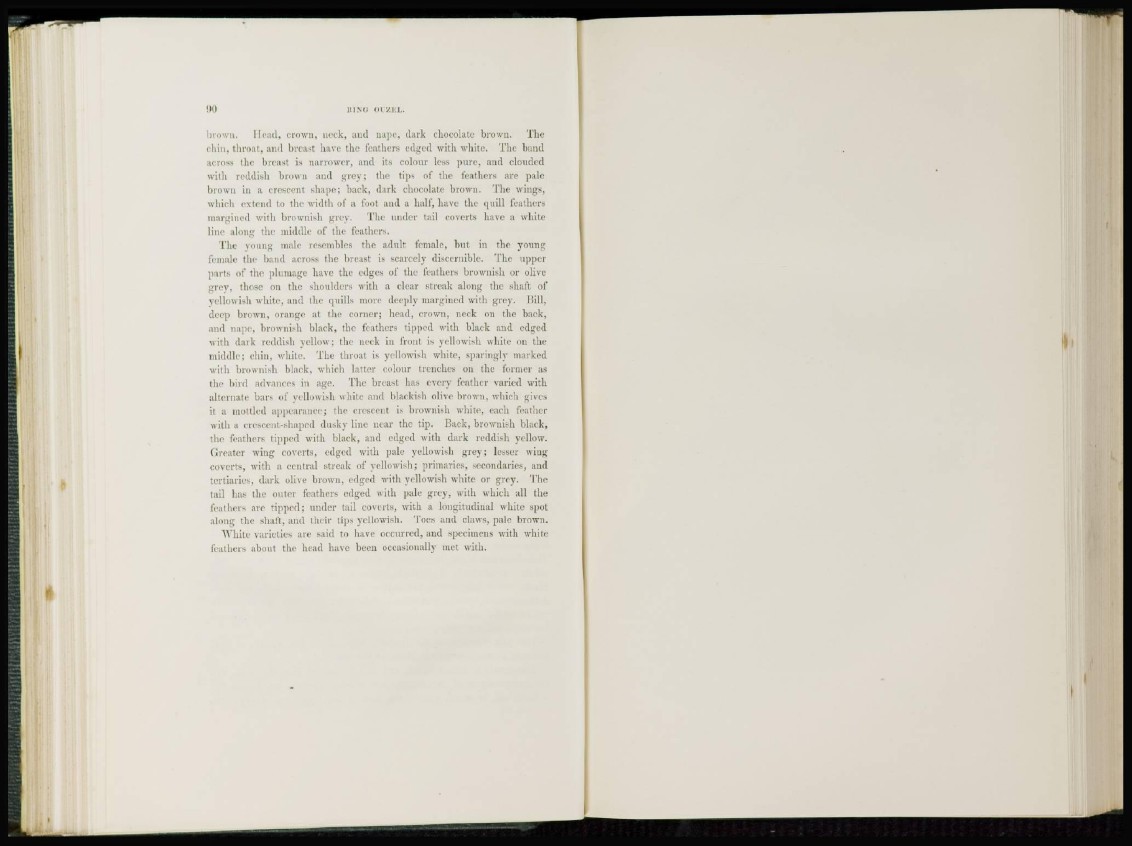
90 KING OUZEL*
brown. I lead, crown, neck, and nape, dark chocolate brown. The
chin, throat, and breast have the feathers edged with white. The band
across the breast is narrower, and its colour less pure, and clouded
with reddish brown and grey; the tips of the feathers are pale
biown in a crescent shape; hack, dark chocolate brown. The wings,
which extend to the width of a foot and a half, have the quill feathers
margined with brownish grey. The under tail coverts have a white
line along the middle of the feathers.
The young nude resembles the adult female, but in the young
female the baud across the breast is scarcely discernible. The upper
parts of tiie plumage have the edges of the feathers brownish or olive
grey, those on the shoulders with a clear streak along the shaft of
yellowish white, and the quills more deeply margined with grey. Bill,
deep brown, orange at the corner; head, crown, neck on the back,
and nape, brownish black, the feathers tipped with black and edged
with dark reddish yellow; the neck in front is yellowish white on the
middle; chin, white. The throat is yellowish white, sparingly marked
with brow n i s h black, which latter colour trenches on the former as
tin- bird advances in age. The breast has every feather varied with
alternate bars of yellowish white and blackish olive brown, which gives
it a mottled appearance; the crescent is brownish white, each feather
with a crescent-shaped dusky line near the tip. Back, brownish black,
the feathers tipped with black, and edged with dark reddish yellow.
(i reater wing coverts, edged with pale yellowish grey; lesser wingcoverts,
with a central streak of yellowish; primaries, secondaries, and
tertiaries, dark olive brown, edged with yellowish white or grey. The
tail has the outer feathers edged with pale grey, with which all the
feathers are tipped; under tail coverts, with a longitudinal white spot
along the shaft, and their tips yellowish. Toes and claws, pale brown.
White varieties are said to have occurred, and specimens with white
feathers about the head have been occasionally met with.